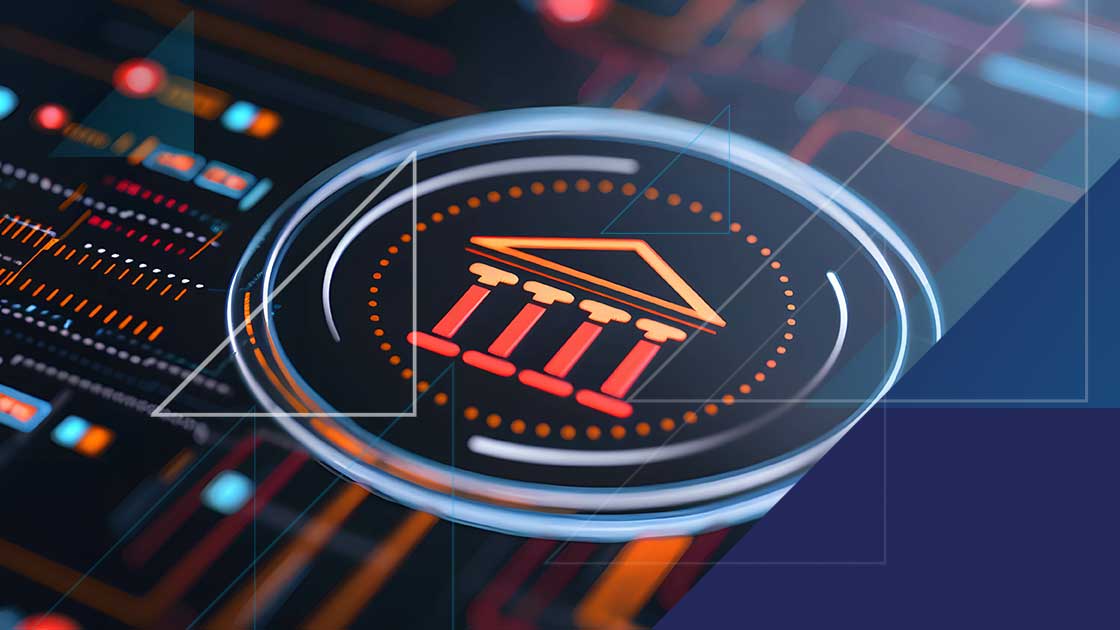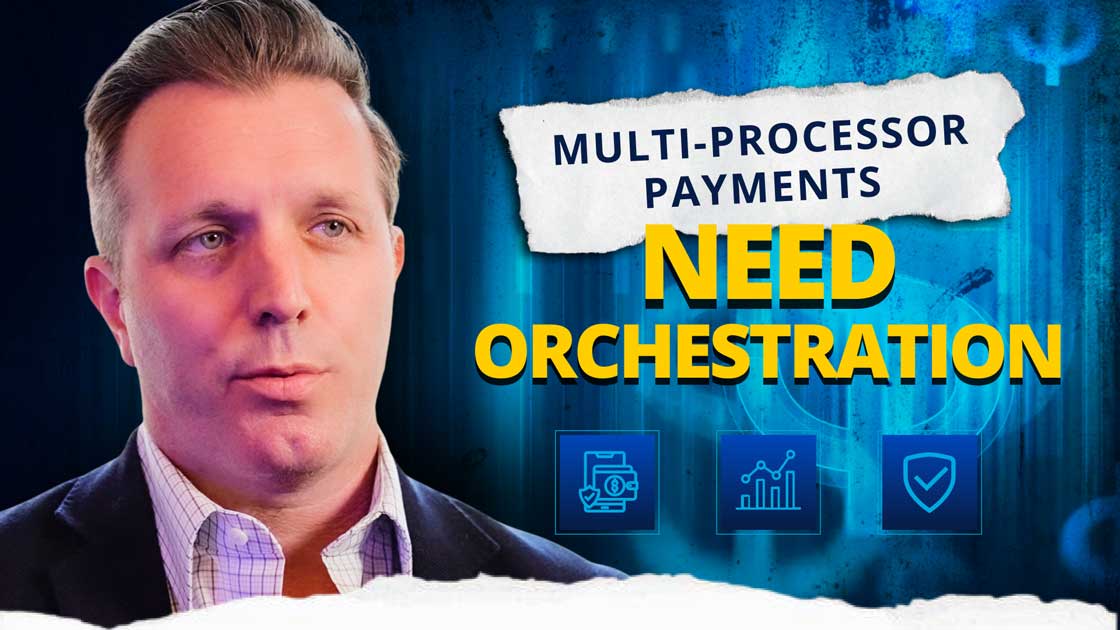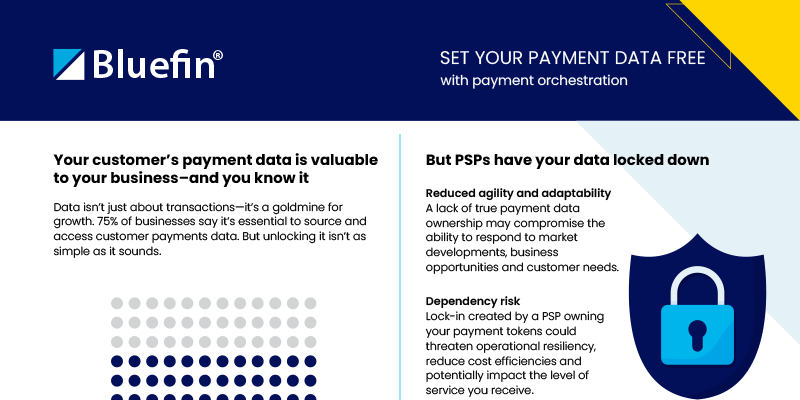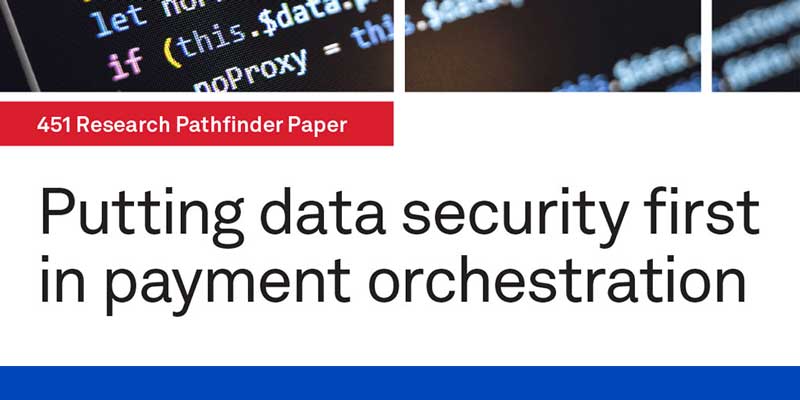The global digital payments market is projected to reach $38.07 trillion by 2030, led by e-commerce growth, mobile transactions, and the increasing complexity of payment processing.
But with scale comes challenges – managing multiple payment gateways, securing transactions, and ensuring seamless customer experiences worldwide.
This is where payment orchestration comes in. More than just a backend solution, it’s a strategic advantage for merchants, enterprises, and ISVs looking to improve security, efficiency, and conversion rates, while maintaining operational flexibility.
Key Takeaways
- Payment orchestration platforms let businesses connect to multiple payment service providers and automatically select the best one for each transaction based on cost, location, speed, or other key factors.
- Leading platforms combine payment flexibility with encryption and tokenization to secure data both in motion and at rest
- Orchestration helps businesses optimize routing strategies and avoid vendor lock-in for more control and cost savings.
- By reducing failed transactions and speeding up checkout, orchestration helps boosts customer satisfaction.
- Orchestration platforms make it easier to expand into new markets by routing transactions through the best local processors based on regional preferences. They also simplify operations by centralizing compliance management and analytics for a unified view across geographies.
- For highly regulated industries, orchestration platforms offer data protection features that help safeguard PII, PHI, and other sensitive information while supporting evolving regulatory demands.
Bluefin’s Chief Revenue Officer, Drew Monroe, explains why more companies are adopting multi-processor payment strategies and how payment orchestration turns complexity into opportunity.
What is Payment Orchestration?
Payment orchestration is an advanced management layer that unifies payment systems into a single, intelligent platform. As businesses expand, they need the ability to seamlessly integrate multiple payment providers, acquirers, and payment methods, without being locked into a single vendor.
Beyond streamlining payments, orchestration is a critical defense against evolving security threats. The most advanced orchestration platforms offer a multi-layered, adaptable approach to securing transactions using technologies such as encryption, payment tokenization, authentication steps like 3D Secure (3DS), and more.
Why is Payment Orchestration Important?
-
Flexibility and Choice
Payment orchestration enables companies to integrate multiple payment providers, acquirers, and payment methods without being restricted to a single vendor.
This not only ensures operational agility but also enables dynamic transaction routing, allowing businesses to select the most cost-effective or reliable processor for each payment, ultimately optimizing performance and reducing costs. Additionally, failover mechanisms ensure that if one processor is down, transactions can still be completed through an alternative provider.
-
Enhanced Encryption and Tokenization, Security, and Compliance
Leading payment orchestration providers offer integrated advanced encryption and network tokenization technologies that meet the standards of the Payment Cards Industry (PCI). PCI-validated point-to-point encryption (P2PE) and tokenization, for example, ensure that sensitive cardholder data never touches a merchant’s system. Platforms like Bluefin’s ShieldConex® Orchestration further strengthen security by reducing PCI compliance scope, minimizing exposure to breaches, and lowering the cost and complexity of maintaining compliance.
As security regulations – such as the PCI Data Security Standard (DSS 4.0) and the European Union’s Revised Payment Services Directive (PSD2) – continue to evolve, payment orchestration simplifies adherence to global standards, reducing the risk of penalties and legal issues. And by eliminating the storage of sensitive data, these platforms limit the impact of breaches, keeping transactions secure while ensuring a seamless payment experience.
-
Better Customer Experience
A well-implemented payment orchestration platform ensures faster, more reliable payment processing, reducing transaction declines and creating a seamless checkout process. Additionally, tokenization enables secure customer data storage and one-click payments, making repeat purchases effortless while maintaining high security. These capabilities not only improve user convenience but also help businesses build trust and loyalty with their customers.
-
Scalable Growth
With payment orchestration offering access to a wider range of payment methods through multiple processors, businesses can enter new markets more quickly and easily. Companies can flexibly adapt to local preferences while reducing failed transactions by routing payments through the most reliable or region-specific providers.
-
Lower Transaction Fees
By offering access to multiple providers, payment orchestration lets businesses avoid getting locked into expensive or underperforming gateways. Instead, payment orchestration systems intelligently route each transaction through the most optimal processor based on factors like location, transaction type, and cost to minimize declines and retry attempts.
-
Reduced IT Overhead
Payment orchestration platforms unify multiple payment providers, methods, and services into one streamlined system through a single integration point.. This simplified architecture helps IT teams reduce the time and effort necessary for upkeep and lowers the number of system errors.
-
API-Driven Integration
Payment orchestration platforms leverage API-driven architectures, enabling seamless and modular integrations with minimal disruption. This flexibility allows businesses to quickly adopt new payment technologies, ensuring they remain agile and competitive in an evolving digital landscape. By streamlining integration, companies can enhance their payment infrastructure without costly or time-consuming overhauls.
How Does Payment Orchestration Work?
When a customer swipes a credit card, the transaction might feel nearly instant. Under the hood, however, a complex series of steps kicks into motion, as the payment orchestration system makes sure each payment is routed quickly and at the lowest possible cost. Here’s how the process works, step by step.
-
Customer Makes a Purchase
A customer shares payment data to buy a product or service online or in-store. This can include credit card details, digital wallet credentials, or other electronic payment methods depending on the channel and customer preference.
-
Sensitive Data Is Protected
If PCI-validated point-to-point encryption (P2PE) is used, sensitive data like payment information is encrypted immediately at the point of entry, before it ever touches the business’s systems, to keep it secure during transmission. Once the data reaches its destination, it can be tokenized to keep it protected while at rest. Modern orchestration platforms support layered security controls including encryption, tokenization, and secure authentication protocols to protect both in-transit and at-rest data.
-
Information Gets Routed to a Payment Processor
The payment orchestration system determines the best payment processor to route the transaction through, based on cost, geography, transaction type, or other business criteria. Advanced systems evaluate real-time performance indicators like transaction success rates, latency, or processor availability to dynamically select the optimal route for each transaction.
-
Fraud Risk Is Assessed in Real-Time
The orchestration platform can run the transaction through built-in or third-party fraud prevention tools to flag or block suspicious activity. This added layer protects the business while improving approval rates and reducing chargebacks. Techniques such as velocity checks, behavioral analytics, and device fingerprinting are often applied during this stage to assess the risk level before completing authorization.
-
Payment Is Processed Through the Chosen Provider
The orchestration layer completes the transaction with the selected processor. The platform manages retries or failover automatically if the first attempt fails, ensuring higher authorization rates and improved user experience.
-
Transaction Data Is Captured and Analyzed
The orchestration platform logs all transaction data for centralized visibility. Businesses can analyze this information to continuously refine routing strategies. Analytics dashboards often include insights into approval rates, payment failures, processor performance, and regional trends, allowing for ongoing optimization of payment flows.
Payment Orchestration vs. Payment Gateways: Key Differences and Why It Matters
| Payment Gateways | Payment Orchestration | |
|---|---|---|
Function | Connects a business to a single payment processor to authorize and transmit transactions. | Acts as a central hub that connects to multiple gateways and processors to optimize routing and operations. |
Features | Core payment processing with basic encryption. Typically tied to one provider’s capabilities. | Multi-processor routing and centralized analytics. Often includes advanced security features like tokenization and PCI-validated encryption, depending on the solution. |
Compliance | Must comply with PCI DSS; merchants often bear more responsibility for managing scope, security tools, and audits. | Can significantly reduce PCI scope when combined with PCI-validated P2PE and tokenization. |
Advantages | Simple to set up if using a single provider. Good for straightforward, low-volume use cases. | Ideal for optimizing costs and approval rates by routing transactions intelligently. Allows for global growth and scaling without provider lock-in. |
Disadvantages | Limited flexibility. Switching processors or adding features often requires costly reintegration and downtime. | May be more than what small or single-channel businesses need if they aren't managing multiple processors or markets. |
The Future of Payment Orchestration
Payment orchestration is no longer a luxury but a necessity for businesses looking to optimize payment operations, reduce costs, and enhance security.
As global e-commerce grows and digital transactions become more complex, adopting a robust orchestration solution ensures businesses stay ahead of payment challenges while leveraging future-proof solutions offered by orchestration solutions, including:
AI-driven fraud prevention and smart routing
Embedded finance and BNPL (buy now, pay later)
Security and compliance automation
Real-time payments and cross-border expansion
API-first and no-code payment solutions
Hyper-personalized payment experiences
Resilient and multi-provider payment strategies
Check out some quick stats on how payment orchestration reduces complexity, increases flexibility, and provides freedom from vendor lock-in.
How to Choose a Payment Orchestration Platform
Beyond streamlining transactions, payment orchestration platforms can also play a powerful role in everything from strengthening data security to supporting global growth. When evaluating a solution, it’s important to consider the bigger picture. Here’s what to look for from a holistic perspective:
Protects Data at Entry Point
Look for a platform that secures sensitive information immediately at the point of entry, no matter whether the transaction happens online, in-store, or via mobile.
Secures Many Types of Data
Today’s payment orchestration solution can go beyond protecting just cardholder data to also secure personally identifiable information (PII), protected health information (PHI), Social Security numbers, and bank account details. For businesses in highly regulated industries like healthcare, education, and government, a platform that safeguards all sensitive data types offers the greatest value and long-term compliance support.
Offers Encryption and Tokenization
Choose a payment orchestration provider that offers integrated advanced encryption and tokenization technologies, such as PCI-validated point-to-point encryption (P2PE) and tokenization, ensuring that sensitive cardholder data never touches a merchant’s system.
Complies with Regulations
Platforms like Bluefin’s ShieldConex® Orchestration reduce PCI compliance scope and make it easier for companies to meet audit requirements. A well-designed payment orchestration solution should also make compliance simpler across multiple regulatory frameworks, including the General Data Protection Regulation (GDPR), Health Insurance Portability and Accountability Act (HIPAA), and California Consumer Privacy Act (CCPA).
Supports Multiple Processors Flexibly
A vendor-agnostic payment orchestration solution lets you work with multiple payment processors without being locked into one. The platform automatically routes transactions to the best processor based on factors like location, transaction type, cost, or risk. Today, 63% of retailers prefer using more than one processor for leverage to negotiate better rates, optimize approvals, and reduce downtime if a provider has issues.
Supports Disaster Recovery
Should an emergency create technical issues or downtime for one processor, your solution should automatically reroute transactions to an alternate provider for uninterrupted service.
Allows Data Ownership
Choose a platform that gives you full ownership and control over your data, including tokens and transaction history. This way, you can adapt quickly as business needs change and switch processors or partners without painful or expensive migrations.
Meets the Needs of Regulated Industries
Highly regulated industries like healthcare, education, and finance face strict requirements around data security. Make sure the solution you choose has the capability to meet the regulatory demands of your sector.
Bluefin’s ShieldConex® Orchestration Platform
Protecting payment and customer data shouldn’t be complex or come with vendor lock-in. ShieldConex® Orchestration offers a secure, data exchange solution that seamlessly integrates multichannel tokenization and PCI-validated P2PE, reducing PCI compliance scope and enhancing data security without vendor lock-in by providing:
- Vaultless tokenization and PCI-validated P2PE to secure payment, PII, and PHI data.
- Seamless API-driven integration to simplify deployment across multiple channels.
- Processor independence to prevent vendor lock-in while optimizing costs.
- Reduced PCI scope to cut compliance costs and security complexity.
White Paper
Learn how secure orchestration built on vaultless tokenization and encryption empowers businesses to reduce vendor lock‑in, retain control of their payment data, and fuel global expansion.
Payment Orchestration FAQs
Who uses payment orchestration?
Payment orchestration is popular with businesses that have multiple payment processors, juggle multiple markets or currencies, manage a high volume of transactions, or simply need flexibility in how they move money. Large retailers, healthcare systems, educational institutions, and government agencies are especially likely to opt for payment orchestration. That said, businesses in many different industries seeking to optimize their payment infrastructure can benefit from this solution.
What is the difference between a payment aggregator and a payment orchestration platform?
A payment aggregator lets businesses accept payments under a shared merchant account. This makes setup simple, especially for small businesses, but limits control and flexibility. A payment orchestration platform, in contrast, connects a business’ own merchant accounts to multiple payment providers. Essentially, orchestration optimizes performance by offering more processor independence and customization.
What is the difference between payment orchestration and PSP?
A payment service provider (PSP) offers businesses the tools to accept credit cards and other payment methods, and processes transactions between businesses and their customers. A payment orchestration platform sits above one or more PSPs, acting as a switchboard that decides which transactions get routed to which PSP. Basically, orchestration solutions help manage multiple PSPs efficiently and cost-effectively.
How does payment orchestration reduce transaction failures?
Payment orchestration platforms route each transaction through the most reliable processor based on real-time criteria like location, processor uptime, and card type. This dynamic routing reduces declines and ensures fallback options are available when a provider is unavailable.
Can payment orchestration support global expansion?
Yes, payment orchestration is ideal for businesses expanding into new markets. It enables intelligent routing to local acquirers, supports region-specific payment methods, and simplifies compliance by centralizing reporting and reconciliation across geographies.
What types of payments can be managed with payment orchestration?
Orchestration platforms typically support a wide range of payment types, including credit cards, debit cards, digital wallets, ACH, bank transfers, and even newer methods like BNPL and crypto. This allows businesses to offer customers multiple options within a unified framework.
Is payment orchestration only for enterprise businesses?
No, while orchestration is especially beneficial for enterprises and high-volume merchants, it can also support mid-sized businesses looking for better reliability, cost efficiency, or multi-provider strategies. Scalable architectures and modular APIs make it accessible for a range of use cases.











